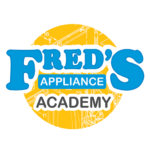Gas or Electric Dryer Service Best Practices
**NOTICE**
Due the danger and complexity of electronics repair, the following shared technical tips are intended for professional reference only.
Please refer to manufacturer’s recommendations as Encompass does not guarantee the accuracy, reliability or safety of this information.
When servicing a Gas or Electric dryer, no matter the complaint, a technician should always first make sure the unit is unplugged or turned off at the breaker to prevent accidental short or electric shock. Dryers have many moving parts, such as rollers, idler pulleys, rear drum bearings, motors and blower wheels that need maintenance and inspection during each service call.
There are many things that can cause one or more of the components listed above to fail. For example, excessive lint built up inside the unit that is abrasive to the bearings in the motor, and rollers. When servicing or maintaining the bearings and rollers make sure to only use a 3 in 1 turbine oil like Zoom Spout. Never use just any grease as the lint will stick to the grease causing the component to bind or seize. If the component is making a noise, it has failed and by just lubricating to cure the noise is only band-aiding the issue for a short time and the part will need to be replaced.
When it comes to maintaining or replacing the rear drum bearing in the GE (some models) or Frigidaire models, it is important to apply a good amount of white lithium grease to help maintain the lifespan of the new or old part. The white lithium grease should only be applied to the rear bearing.
Good practice when servicing dryers is as follows:
- Check venting making sure the customer has proper vent: for example, semi-rigid, galvanized steel or aluminum with the proper elbows attached (no plastic or foil venting as they are considered fire hazards).
- Check all moving parts and apply the correct lubricant (white lithium grease for rear bearings and 3 in 1 turbine oil for rollers and pulleys).
- If the part is making noise, replace.
- Vacuum out the unit with a Shop Vac to clear all excessive lint that builds up on the floor and inside the blower.
- Check lint filter by running under water, checking for restrictions built up from too much fabric softener. Use soft bristled brush to clean the filter of any fabric softener. Check airflow of the unit outside and advise customer if venting needs cleaning; this should be done about once a year.
- For electric units, check cord for heat marks on the terminal blockand prongs.
- For gas units, check to make sure gas shutoffs and lines are updated.
Following these steps will not only increase the lifespan of the unit, but will also satisfy customers by demonstrating you care by taking the extra time to be thorough.
Special thanks to Fred’s Appliance Academy for these valuable tips.





Leave a Reply